Archive | Infrastructure RSS feed for this section
Industry and trade, Infrastructure
 Infrastructure, Regional cooperation and integration
Infrastructure, Regional cooperation and integration
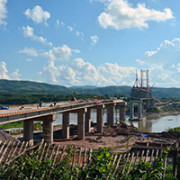 Infrastructure
Infrastructure
 Infrastructure, Social development and protection
Infrastructure, Social development and protection
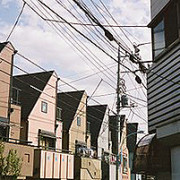 Infrastructure
Infrastructure
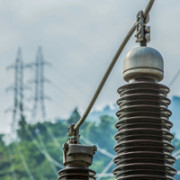 Infrastructure
Infrastructure
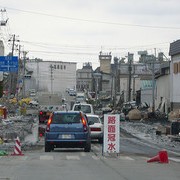 Infrastructure
Infrastructure
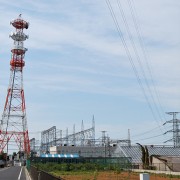
Why poor countries should invest first in national trade infrastructure

Low-income countries are often advised to prioritize investment in their trade infrastructure to better connect to international markets, and garner the benefits of a more open trade regime. The World Bank’s Trade Facilitation Support Program and the World Trade Organization (WTO)’s Trade Facilitation Agreement, for example, promote investment in trade infrastructure to boost development prospects by improving competitiveness and lowering trade costs.
Boosting South Asia integration through the realization of dream projects

Despite strong linkages in the past during the colonial period and strong ethnic and traditional ties, South Asian countries have become increasingly more diverse since their independence. While they are geographically closely connected, this does not mean that they are well integrated. Countries in the region have vastly different sizes, populations, and topography, and there are significant differences in their economies and income per capita. The conditions, however, might be ripe for a boost in regional integration. Implementing highly visible and symbolic transport connectivity projects, which have long been considered as dream realizations, would trigger the acceleration of regional integration for the benefit of all.
South Asia could be linchpin for regional integration

As the world deals with the "new normal" of a slowing China, regional financial and economic integration is more important than ever, and South Asia is strategically poised to play an influential part. There are several reasons why it is time to take a fresh look at the potential bridging role of South Asian economies in Asian integration. First, the South Asian economies -- which comprise India, Pakistan, Bangladesh, Sri Lanka, Nepal, the Maldives, Afghanistan and Bhutan -- have a largely untapped market of about 1.7 billion people, and they belong to the South Asian Free Trade Area.
On the unintended consequences of housing policies: A cautionary tale of three developed countries

Lack of affordable housing is a serious policy concern in many countries. In large prosperous cities such as London, New York, Beijing, or Tokyo, the affordability crisis is particularly acute. In these cities, households often live in excessively expensive and crammed spaces. Homeownership remains an unachievable dream for many. Not surprisingly, voters in these places pressure politicians into implementing policies that tackle the crisis.
The case for connecting South Asia and Southeast Asia

The time is ripe for enhancing economic integration between South Asia and Southeast Asia. The new “normal” era of slow growth in advanced industrial economies following the global financial crisis suggests that Asian economies will need to rely more on domestic and regional demand to secure inclusive growth. The recent slowdown in growth in the People’s Republic of China suggests further grounds for tapping growth opportunities between South Asia and Southeast Asia.
Japan’s post-disaster growth strategy

The Great East Japan Earthquake on 11 March 2011 was the biggest earthquake recorded in Japanese seismic history, and the fourth largest recorded in the world. The scope of the triple disaster consisting of an earthquake, a tsunami, and a nuclear accident, far exceeded that of the Hanshin Earthquake of 1995. The repercussions of this disaster spread far beyond the geographical areas directly affected. For example, electric power supply capacity in the Kanto area, which accounts for about 40% of Japanese gross domestic product (GDP), fell at one stage by about 40% from the normal peak—a severe constraint on economic activity, and the supply of nuclear-generated electric power has largely been cut off since then. Production supply chains were significantly disrupted, not only in Japan, but all over Asia, although they recovered surprisingly rapidly.
Urgent need to restructure Japan’s Electric Power Industry after Fukushima

Austrian economist Joseph Schumpeter argued that the “process of creative destruction,” whereby new industries are created by destroying the old combinations and creating new ones, is essential to drive growth. Japan’s electric power industry finds itself at such an evolutionary crossroads.The Fukushima nuclear disaster offers Japan a chance to pull the plug on the nation’s power monopolies and put in place an energy industry that would be more efficient, innovative, environmentally friendly, and safer. Tokyo Electric Power Company (TEPCO), which owns the Fukushima power plants, is a typical Japanese power monopoly. It supplies electricity to the Tokyo metropolitan area and can flex enormous market muscle as an integrated regional monopoly in the supply of electric power.


Search
Subscribe / Connect to Asia Pathways
Subjects
- Agriculture and natural resources
- Blog
- Capacity development
- Climate change
- Economics
- Education
- Energy
- Environment
- Finance sector development
- Gender
- Governance and public sector management
- Health
- Industry and trade
- Information and Communications Technology
- Infrastructure
- Miscellaneous
- Population
- Poverty
- Private sector development
- Regional cooperation and integration
- Sanitation
- Social development and protection
- Transport
- Uncategorized
- Urban development
- Video Blog
- Water
Recent Posts
- Unraveling the Health Risks of Climate Change
- Linking Farmers to Markets Through Agricultural Cooperatives and E-Commerce in Asia
- How Can Governments Support Electricity Distribution to Achieve Net Zero in Asia?
- Promoting Corporate Climate Action Through Greenhouse Gas Accounting
- Evaluating G7 Commitments on Climate Change, Health, Well-Being, and Agriculture




Recent Comments